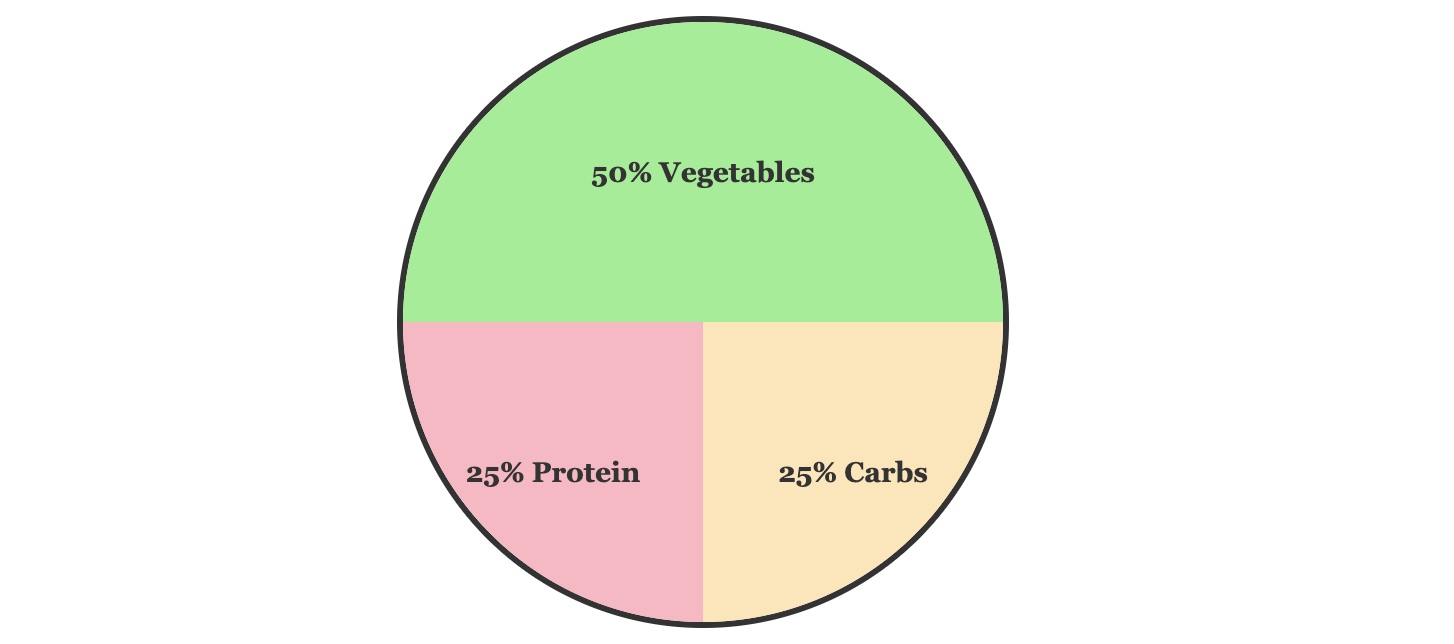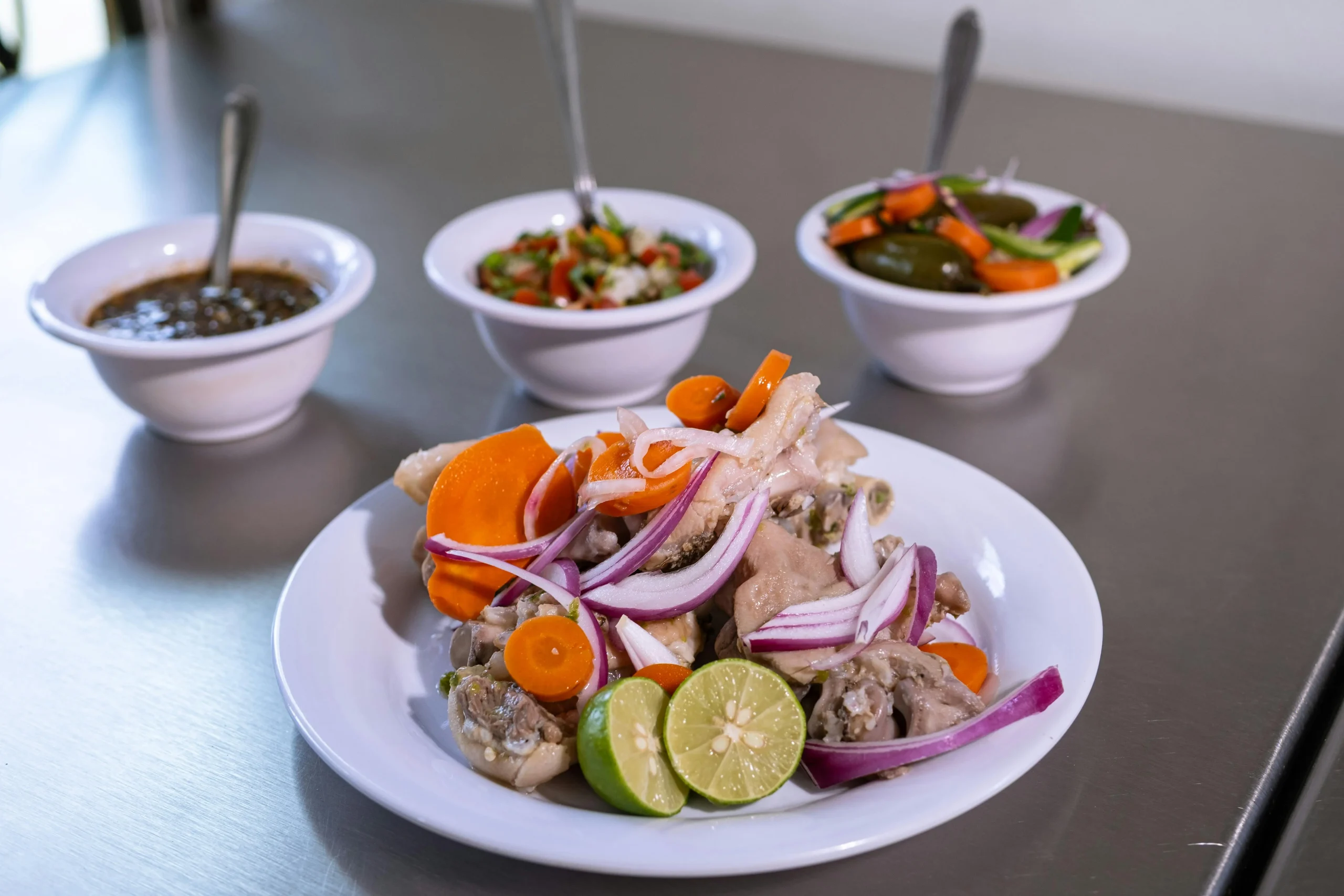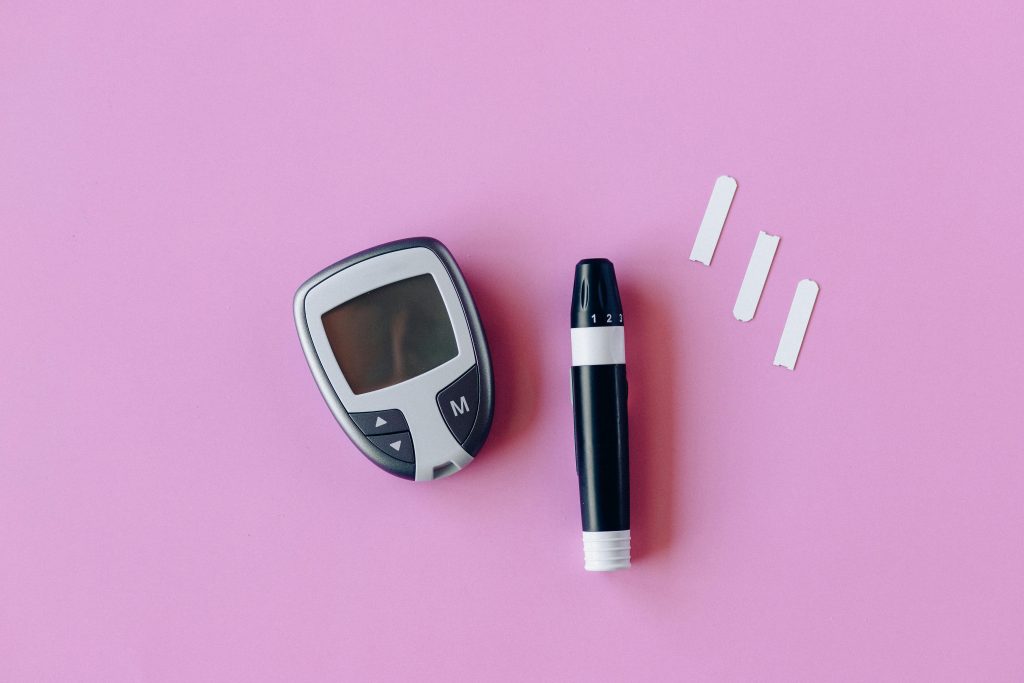Table Of Contents
-
Key Highlights
- Diabetes Dinner Meal Planning Made Simple
- The Complete 30-Day Diabetic Dinner Plan
- Sample Weekly Shopping List & Prep Hacks
- Portion Control & Carb-Counting for Dinner
- Customizing for Preferences & Budget
- Tips for Staying on Track & Eating Out
-
Frequently Asked Questions
-
Conclusion
- References and Sources
Key Highlights
- Ready-to-use 30-day diabetic dinner calendar for balanced blood sugar management with no meal planning stress
- All meals align with ADA/CDC nutrition standards ensuring safe, effective diabetes management
- Simple recipes using accessible ingredients perfect for busy families and working households
- Complete carb and nutrition counts for confident tracking and blood sugar control
- Week-by-week shopping and batch-prep strategies to save time and reduce food waste
- Variations for dietary preferences including vegetarian, plant-based, and budget-conscious options
- Visual portion control guides using the proven CDC plate method for easy meal assembly
Diabetes Dinner Meal Planning Made Simple
Successful diabetes management starts with understanding the fundamentals of blood sugar-friendly meal planning. The key lies in balancing carbohydrates, protein, and healthy fats while controlling portions and timing your meals consistently.
The CDC Plate Method: Your Foundation for Success

50% Non-starchy vegetables (green) | 25% Lean protein (pink) | 25% Healthy carbohydrates (beige)
The CDC plate method simplifies meal planning by providing visual guidelines for portion control. This approach helps maintain steady blood sugar levels while ensuring you get balanced nutrition at every meal.
Carb Counting Essentials for Dinner Success
Most adults with diabetes should aim for 45-60 grams of carbohydrates per dinner, though your individual needs may vary. Always consult with your healthcare team to determine your personal carb targets. Our meal plan provides exact carb counts for each recipe, making tracking effortless.
 Pro Tip:
Pro Tip:
Spread your daily carbs evenly across meals to avoid blood sugar spikes. If your daily target is 150g carbs, aim for about 50g at each main meal.
The Complete 30-Day Diabetic Dinner Plan
Our carefully crafted 30-day plan provides variety, nutrition, and convenience. Each week focuses on different protein sources and cooking methods to prevent meal fatigue while maintaining blood sugar stability.
Week 1: Foundation Favorites (Days 1-7)
| Sun | Mon | Tue | Wed | Thu | Fri | Sat |
|---|---|---|---|---|---|---|
| 1 | 2 | 3 | 4 | 5 | 6 | 7 |
| Grilled Chicken with Roasted Vegetables | Turkey & Bean Chili | Baked Salmon with Quinoa | Vegetarian Spanish Omelet | Lean Beef Stir-Fry | Caribbean Red Snapper | Chicken & Brown Rice Bowl |
| Carbs: 22g | Cal: 425 | Carbs: 28g | Cal: 380 | Carbs: 35g | Cal: 465 | Carbs: 24g | Cal: 310 | Carbs: 26g | Cal: 395 | Carbs: 18g | Cal: 340 | Carbs: 42g | Cal: 450 |
Week 2: International Flavors (Days 8-14)
| Sun | Mon | Tue | Wed | Thu | Fri | Sat |
|---|---|---|---|---|---|---|
| 8 | 9 | 10 | 11 | 12 | 13 | 14 |
| Mediterranean Chicken | Asian Tofu Stir-Fry | Mexican Fish Tacos | Italian Zucchini Boats | Indian Lentil Curry | Thai Basil Chicken | Greek Stuffed Peppers |
| Carbs: 29g | Cal: 415 | Carbs: 31g | Cal: 365 | Carbs: 38g | Cal: 425 | Carbs: 25g | Cal: 355 | Carbs: 44g | Cal: 390 | Carbs: 27g | Cal: 385 | Carbs: 33g | Cal: 405 |
Week 3: Comfort Food Makeovers (Days 15-21)
| Sun | Mon | Tue | Wed | Thu | Fri | Sat |
|---|---|---|---|---|---|---|
| 15 | 16 | 17 | 18 | 19 | 20 | 21 |
| Cauliflower Mac & Cheese | Turkey Meatball Marinara | Loaded Veggie Pizza | Shepherd's Pie Casserole | BBQ Chicken Salad | Stuffed Sweet Potato | Beef & Vegetable Stew |
| Carbs: 28g | Cal: 375 | Carbs: 35g | Cal: 420 | Carbs: 41g | Cal: 385 | Carbs: 39g | Cal: 445 | Carbs: 22g | Cal: 355 | Carbs: 45g | Cal: 395 | Carbs: 32g | Cal: 415 |
Week 4: Fresh & Light Options (Days 22-28)
| Sun | Mon | Tue | Wed | Thu | Fri | Sat |
|---|---|---|---|---|---|---|
| 22 | 23 | 24 | 25 | 26 | 27 | 28 |
| Grilled Shrimp Skewers | Chicken Lettuce Wraps | Quinoa Stuffed Portobello | Herb-Crusted Cod | Turkey Avocado Wrap | Veggie Buddha Bowl | Lemon Garlic Chicken |
| Carbs: 24g | Cal: 325 | Carbs: 18g | Cal: 295 | Carbs: 36g | Cal: 365 | Carbs: 21g | Cal: 315 | Carbs: 34g | Cal: 385 | Carbs: 41g | Cal: 395 | Carbs: 19g | Cal: 345 |
Bonus Days 29-30: Celebration Meals
Day 29: Special Occasion Salmon (Carbs: 28g | Cal: 425)
Day 30: Family Feast Turkey Dinner (Carbs: 38g | Cal: 465)
Sample Weekly Shopping List & Prep Hacks
Efficient shopping and meal prep are essential for success with your diabetic meal plan. Our strategic approach helps you save time, money, and reduces the stress of daily meal decisions.
Time-Saving Batch Prep Tips
- Sunday Protein Prep: Cook 3-4 chicken breasts and portion for the week. This saves 20+ minutes on busy weeknights.
- Vegetable Pre-Chopping: Wash and chop all vegetables on Sunday. Store in clear containers for easy access.
- Grain Batch Cooking: Cook a large batch of quinoa or brown rice. Store portions in the freezer for quick reheating.
- Sauce & Seasoning Prep: Mix spice blends and prepare low-carb sauces in advance to add instant flavor.
According to the CDC’s diabetes meal planning guidelines, preparing ingredients in advance can reduce meal preparation time by up to 50% while improving dietary adherence.
Portion Control & Carb-Counting for Dinner
Mastering portion control is crucial for managing blood sugar levels effectively. The visual cues recommended by health authorities make this easier than you might think.
Visual Portion Guide: Use Your Hands
- Protein Portion: Palm-sized portion (3-4 oz) = 0-2g carbs
- Vegetable Portion: Two cupped hands = 5-10g carbs
- Carbohydrate Portion: Cupped hand = 15g carbs
- Fat Portion: Thumb tip = 0g carbs (but important for satiety)
Sample Meal Breakdown: Turkey Stew
Let’s examine one of our popular recipes to understand the nutritional balance:
- Total Calories: 450
- Carbohydrates: 56g (includes vegetables, potatoes, and thickening)
- Protein: 40g (excellent for blood sugar stability)
- Fiber: 12g (helps slow carb absorption)
- Sodium: 680mg (within recommended limits)
This nutritional profile aligns perfectly with ADA recommendations for balanced diabetic meals, providing sustained energy without blood sugar spikes.
Customizing for Preferences & Budget
Your meal plan should work for your lifestyle, budget, and taste preferences. Here’s how to adapt our foundation plan to meet your specific needs.
Vegetarian & Plant-Based Adaptations
Replace animal proteins with these diabetes-friendly alternatives:
- Tofu & Tempeh: 1/2 cup = 4-8g carbs, excellent protein source
- Legumes: 1/2 cup cooked = 15g carbs, high fiber content
- Nuts & Seeds: 1 oz = 2-4g carbs, healthy fats for satiety
- Plant-Based Proteins: Choose products with <15g carbs per serving
Budget-Friendly Swaps
Eating well with diabetes doesn’t require expensive ingredients:
- Frozen Vegetables: Often more affordable than fresh, equally nutritious
- Canned Fish: Replace fresh fish 2-3 times per week with canned salmon or tuna
- Dried Beans: Cost 70% less than canned, soak overnight for easy cooking
- Seasonal Produce: Build meals around what’s in season for maximum savings
Family-Friendly Modifications
Make diabetes meals appealing to the whole family:
- Serve Extras Separately: Offer additional carbs (bread, rice) for non-diabetic family members
- Kid-Friendly Preparations: Use fun shapes for vegetables, involve children in cooking
- Flavor Variations: Prepare base recipes with different seasoning options
Tips for Staying on Track & Eating Out
Real life includes dining out, social events, and unexpected schedule changes. Here’s how to maintain your diabetes management goals in any situation.
Restaurant Success Strategies
- Preview Menus Online: Plan your order before arriving to avoid impulsive choices
- Ask for Modifications: Request grilled instead of fried, sauce on the side, extra vegetables
- Control Portions: Ask for a to-go container immediately and pack half your meal
- Focus on Protein & Vegetables: Fill up on these first, then add small amounts of carbs
Social Event Navigation
Don’t let social situations derail your progress:
- Eat Before You Go: Have a small diabetic-friendly snack to avoid arriving hungry
- Bring a Dish: Contribute a diabetes-friendly option you know you can enjoy
- Stay Hydrated: Often hunger is actually thirst, especially in social settings
- Plan for Treats: If you know dessert is coming, reduce carbs earlier in the day
Frequently Asked Questions
Sheet pan meals, stir-fries, and slow cooker recipes are perfect for busy schedules. Try grilled chicken with roasted vegetables (25 minutes total), turkey chili in the slow cooker, or Asian tofu stir-fry (15 minutes). All provide balanced nutrition with minimal prep time.
Generally 45-60g per dinner works for most adults with diabetes, but individual needs vary. Consult your healthcare team for personalized targets. Our meal plan averages 30g carbs per dinner, leaving room for sides or snacks while maintaining blood sugar stability.
Absolutely! Batch cooking saves time and ensures you always have diabetes-friendly options ready. Cook proteins in bulk, prepare grain portions, and pre-chop vegetables. Most of our recipes freeze well for up to 3 months or refrigerate for 4-5 days.
The CDC plate method is the gold standard: fill half your plate with non-starchy vegetables, one quarter with lean protein, and one quarter with healthy carbohydrates. This visual approach automatically controls portions and balances nutrients for stable blood sugar.
Yes! Our plan includes vegetarian Spanish omelet, Asian tofu stir-fry, Indian lentil curry, and quinoa-stuffed portobello mushrooms. Plant-based proteins like tofu, tempeh, and legumes provide excellent nutrition while keeping carbs controlled.
Focus on naturally delicious, universally appealing recipes like Mediterranean chicken or Mexican fish tacos. Serve additional carbs (rolls, extra rice) separately for non-diabetic family members. Get kids involved in cooking to increase their interest in healthy eating.
Use nutrition labels and carb counting guides to tally all ingredients containing carbohydrates. Focus on main carb sources like grains, starchy vegetables, and fruits. Most proteins and non-starchy vegetables contribute minimal carbs. Apps like MyFitnessPal can help with calculations.
Conclusion
Your journey to better diabetes management through improved dinner planning starts today. This comprehensive 30-day meal plan removes the guesswork while providing the variety and nutrition your body needs to maintain stable blood sugar levels.
Remember that consistency beats perfection. Start with the meals that appeal to you most, gradually incorporating new recipes as you build confidence. Each dinner you prepare following these guidelines is a step toward better health and improved quality of life.
Most importantly, this meal plan is designed to fit into your real life. Whether you’re cooking for one or feeding a family, working long hours or managing a busy household, these diabetes-friendly dinners provide the foundation for sustainable, healthy eating habits.
Take action today by selecting your first week of meals and creating your shopping list. Your future self will thank you for taking this important step toward better diabetes management. What dinner from Week 1 are you most excited to try first?
References and Sources
- CDC Tasty Recipes for People with Diabetes and Their Families PDF — ADA-compliant, carb-counted diabetic dinner recipes and nutrition data
- CDC Diabetes Meal Planning Page — Plate method, portion control visuals, meal planning authority
- University of Michigan Diabetes Meal Plan PDF — 7-day meal structure, dinner examples, carb counts
- Sample Menu – Diabetes Health Source — Day-by-day sample menus, portion ideas
- Alabama Public Health Diabetic Recipes PDF — Culturally inclusive recipe and nutrition information
- CDC Carbohydrate Counting Resource — Detailed carb counting advice and guidelines
- ADA Food Hub — Additional recipes, meal planning tools, and nutritional guidance
- NHS UK Diabetes Meal Planning — International validation of diabetes nutrition best practices
Statistical References
- 1 in 10 Americans diagnosed with diabetes (CDC, 2024)
- ADA Plate Method: 50% non-starchy vegetables, 25% lean protein, 25% healthy carbs
- Recommended dinner carb target: typically 45–60g per meal (consult healthcare team)
- Balanced meals reduce post-meal blood sugar spikes by up to 29% (CDC/ADA clinical guidance)
- Restaurant entrees now 2–3 times typical serving size (CDC portion method guidelines)
Disclaimer:
The information provided on MD-Pilot is for educational and informational purposes only. It is not intended as a substitute for professional medical advice, diagnosis, or treatment. Always seek the advice of your physician or other qualified healthcare provider with any questions you may have regarding a medical condition. Never disregard professional medical advice or delay in seeking it because of something you have read on this website.
Recomended Articles
View AllWeekly Health Intel
Get evidence-based health tips, latest research, and exclusive guides delivered weekly




